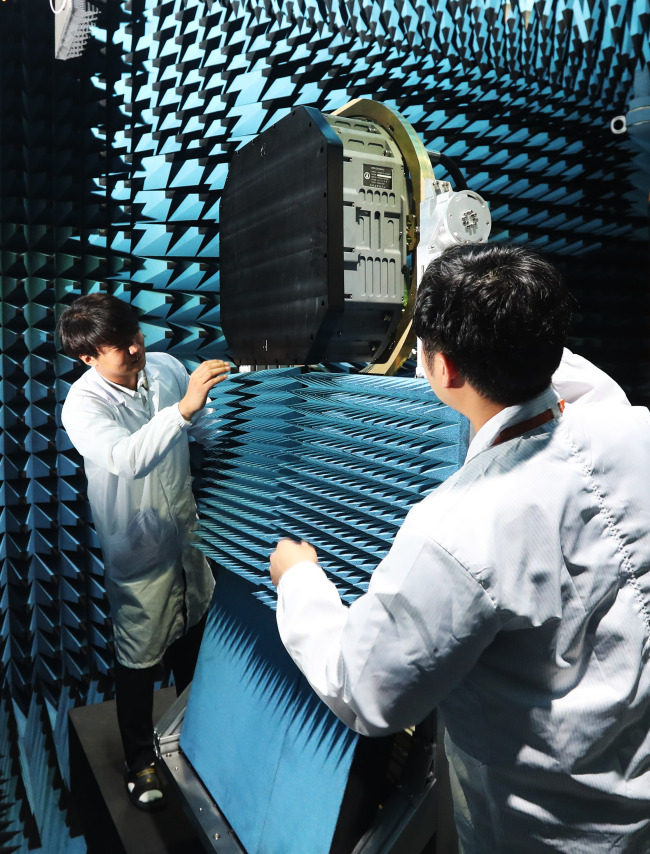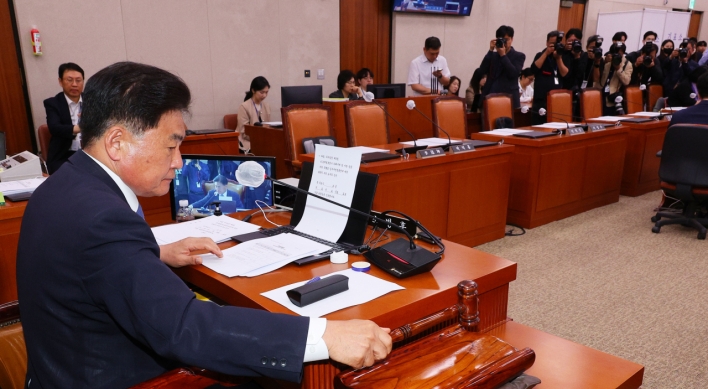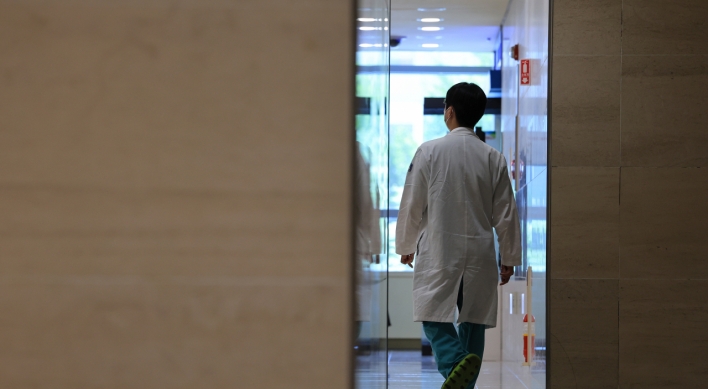South Korea’s arms procurement agency on Thursday unveiled a prototype of an advanced radar for its homegrown fighter jet project, accelerating efforts to complete the development by 2026.
The state-run Agency for Defense Development ran detection capability tests on a simplified version of the “active electronically scanned array” radar at Hanwha Systems research institute in Yongin, Gyeonggi Province. Hanwha, a local defense firm, is the contractor for the development of the advanced radar system.
Consisting of antenna and power supply, the mock-up AESA radar acquired targets within 120-degree detection range by transmitting electronic wave. Using 1,000 modules, it can detect a target as small as one meter long during an actual combat, according to ADD officials.
“Our current goal is to figure out what kinds of risk we will face,” an official from Defense Acquisition Program Administration, which oversees the ADD, said under the condition of anonymity. “We will verify our capability through an upcoming flight test. If there is no issue, we will be good to go.”

Known as a crucial equipment to stealth fighters, the AESA radar allows aircraft to remain stealthy by sending out signals that are spread out across a band of frequencies and are difficult to detect over background noise. It also allows the fighters to engage in electronic warfare by evading enemy‘s radar detection.
AESA will undergo five years of flight tests from 2022 and 2026 by mounting it onto a prototype fighter jet for Korean Fighter Experimental program, or KF-X, whose development is scheduled to be finished in 2026, according to DAPA.
The 18.1 trillion won ($15.7 billion) KF-X project seeks to produce 120 fighter jets with domestic technology and deploy them at the South Korean Air Force by 2032. They will replace the older F-4 and F-5 jets currently in service.
South Korea launched the project to develop its own AESA radar system after the US refused to transfer core technologies to be applied to the KF-X jets in 2015. The technologies included the AESA radar, radio frequency jammer, electronic optics targeting pod, and infrared search and track system.
DAPA signed a 40 billion won deal with Israeli contractor Elta Systems for technical support on the radar’s transmitting and receiving devices and among others.
DAPA reiterated that although it would receive “technical support” from overseas contractors, the core hardware and software -- such as algorithms for missile detection capabilities and radar-evading system -- would be developed on its own.
“Throughout the process, there would be certain phases where we get technical support, if necessary. But there will be no overseas involvement when we mount the radar on KF-X fighters for a flight test,” DAPA official said.
By Yeo Jun-suk jasonyeo@heraldcorp.com">@heraldcorp.com)
By Yeo Jun-suk (jasonyeo@heraldcorp.com)










![[Kim Seong-kon] Democracy and the future of South Korea](http://res.heraldm.com/phpwas/restmb_idxmake.php?idx=644&simg=/content/image/2024/04/16/20240416050802_0.jpg&u=)








![[Today’s K-pop] Zico drops snippet of collaboration with Jennie](http://res.heraldm.com/phpwas/restmb_idxmake.php?idx=642&simg=/content/image/2024/04/18/20240418050702_0.jpg&u=)